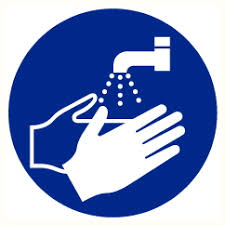COVID-19 recovery at home: Information for patients and their families

You have confirmed (or possible) COVID-19, and you are being sent home to rest and recover, as your symptoms do not require hospitalization at this time. People who have the COVID-19 virus can use supportive care to help relieve their symptoms, as the body works to recover from the virus infection.
Take care of yourself

Contact your regular primary care provider immediately. Let them know that you have been diagnosed or tested here, and released home to rest and recover. They may have further instructions, or be able to answer additional questions you may have as they guide your recovery.
Take care of yourself. Get plenty of rest. Stay hydrated by drinking lots of fluids, like water or herbal tea, things that don’t contain caffeine or alcohol. Choose foods like soups with lots of liquid. Over-the-counter medications can help to manage your symptoms; follow your health care provider’s instructions, or ask them for advice if needed.
Monitor your symptoms carefully. If your symptoms get worse, call your health care provider immediately. If you develop emergency warning signs, get medical attention immediately — the same as you would for any emergency condition.
*This list is not all inclusive. Please consult your medical provider for any symptoms that are severe or concerning.
Help protect your loved ones, health care providers and community
- Stay home, except to get medical care.Stay home from work, school, and away from other public placesincluding the store. If you must go out, avoid public transportation or ridesharing/taxis and stay far away (6-feet or more) away from other people.
- Call ahead.If you have a medical appointment, call the health care provider ahead of time and tell them that you have or may have COVID-19. Follow their instructions.
- Stay away from others in your home.As much as possible, stay in a specific room and away from other people in your home to protect them. Keep the door closed. Use a separate bathroom, if available. Clean all surfaces that are shared with others.

- Wear a mask If you need to be around other people in or outside of the home, wear a facemask. If you are not able to (for example, because it causes trouble breathing), then people should not stay in the same room with you.
- Cover your cough and sneezes.Use a tissue or your elbow. Throw the tissue away immediately and wash or sanitize your hands.

- Wash your hands often.Use soap and water for at least 20 seconds. Or use an alcohol-based hand sanitizer that contains at least 60% alcohol. It’s especially important to clean your hands after blowing your nose, coughing, sneezing, going to the bathroom, and before eating or preparing food. For visible soiling, soap and water are best.
- Avoid sharing personal items with others.Some examples include dishes, towels, and bedding.
- Don’t handle pets or other animals while sick.
- If you are the only adult, clean surfaces that are touched often.
Information for families
Your loved one with confirmed (or possible) COVID-19 is being sent home to rest and recover. Here are ways to help them, while also protecting yourself and your surrounding community as much as possible
Help protect your loved one, health care providers and community
- Monitor your own health closely.Call your health care provider right away if you develop symptoms suggestive of COVID-19.
- Understand any medical instructions.Make sure that you understand, and can help the patient follow, their health care provider’s instructions for medication(s) and care.
- Help the patient to rest at home.Help with basic needs in the home, and provide support for getting groceries, prescriptions, and other personal needs.
- Monitor the patient’s symptoms. If the patient is getting sicker, call his or her health care provider and tell them that the patient has confirmed or possible COVID-19.
- For medical emergencies,Notify the dispatcher that you have or may have a COVID-19 individual.
- Stay physically away from the patient as much as possible.Household members should stay in another room or be separated from the patient as much as possible, keep the door to the patient’s room closed, and use a separate bedroom and bathroom, if available. Visitors should not be allowed and patients should stay away from pets.
- Wear mask The patient should wear a facemask around you and others. If they can’t (for example, because it causes trouble breathing), you should wear a mask when you are in the same room as the patient. Also wear a disposable facemask and gloves when you have contact with the patient’s body fluids, such as saliva, sputum, nasal mucus, vomit, urine, blood and stool. Throw out disposable facemasks and gloves after using them.
- Welcome fresh air.Make sure that shared spaces in the home have good air flow, such as by an air conditioner or an opened window (weather permitting).
- Wash your hands often.Use soap and water for at least 20 seconds. Or use an alcohol-based hand sanitizer that contains at least 60% alcohol. For visible soiling, soap and water are best.
- Avoid touching your eyes, nose, and mouth with unwashed hands.

- Avoid sharing personal items with the patient such as dishes, towels, and bedding.
- Clean all “high-touch” surfaces daily.Some examples are doorknobs, counters, tabletops, bathroom fixtures, toilets, phones/tablets, keyboards, and bedside tables. Also clean any surfaces that may have body fluids on them.
- Wear disposable gloves while handling laundry and other soiled items, and keep the soiled items away from your body.Clean your hands immediately after removing gloves.
![]()
prepare:
neshat khosravi- microbiologist
refrence:
https://health.ucdavis.edu







Recent Comments